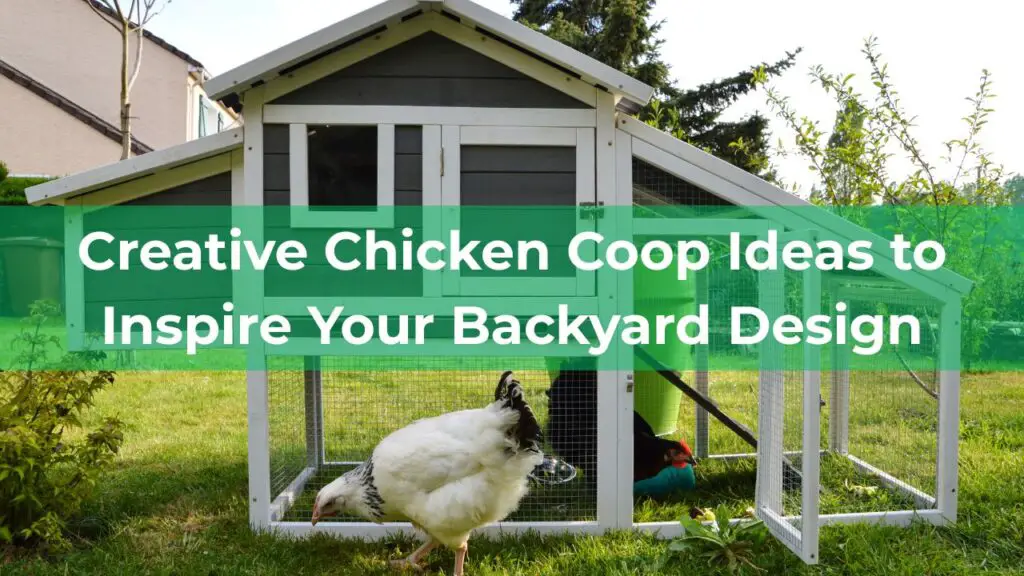Flower box design combines aesthetics and functionality, making it easier to bring the beauty of nature into any space. It’s a fun way to showcase your personal style while providing a home for your favorite blooms, whether indoors or outdoors. From choosing the right materials to picking the perfect plants, getting creative with flower boxes can add a cheerful touch to your environment.
Vertical Flower Box Designs for Small Spaces
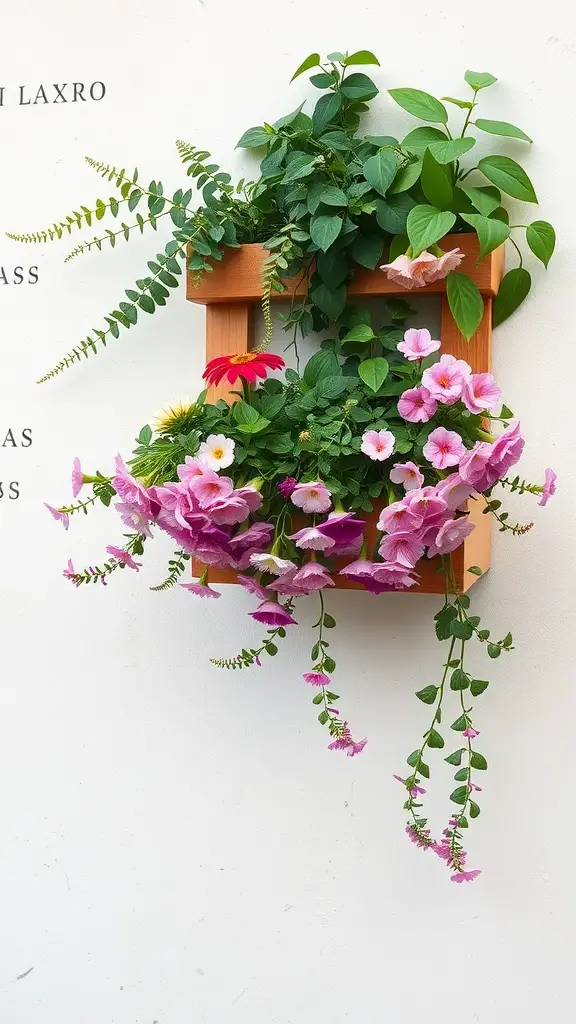
Vertical flower boxes are a fantastic way to bring life to small spaces. They allow you to maximize your planting area without taking up much room. The image shows a vibrant vertical flower box filled with a mix of colorful blooms and lush greenery.
The wooden structure is simple yet effective, providing a sturdy base for the plants. The flowers, including pinks and purples, create a cheerful display. This design not only adds beauty but also makes use of vertical space, perfect for balconies or small patios.
Incorporating various plant types adds texture and depth. The trailing vines and cascading flowers create a dynamic look, making the arrangement visually interesting. This is a great option for anyone looking to enhance their outdoor or indoor space without needing a large garden.
Creative Container Options for Flower Boxes

When it comes to flower boxes, the container you choose can make a big difference. The image shows a variety of containers, each with its own unique style. From classic wooden boxes to colorful ceramic pots, there’s something for everyone.
The stacked arrangement of different containers creates a fun visual interest. You can see vibrant flowers peeking out from each box, showcasing how well they complement the containers. Mixing materials like metal, plastic, and wood adds texture and depth to your garden space.
Consider using larger containers for bigger plants and smaller ones for delicate flowers. This variety allows you to create a layered look that draws the eye. Don’t shy away from experimenting with colors and shapes. A bright pink pot can stand out beautifully against a backdrop of lush greenery.
Remember, the right container can enhance the beauty of your flowers while also providing the necessary drainage and support. So, get creative and let your flower boxes shine!
Using Edibles in Flower Boxes
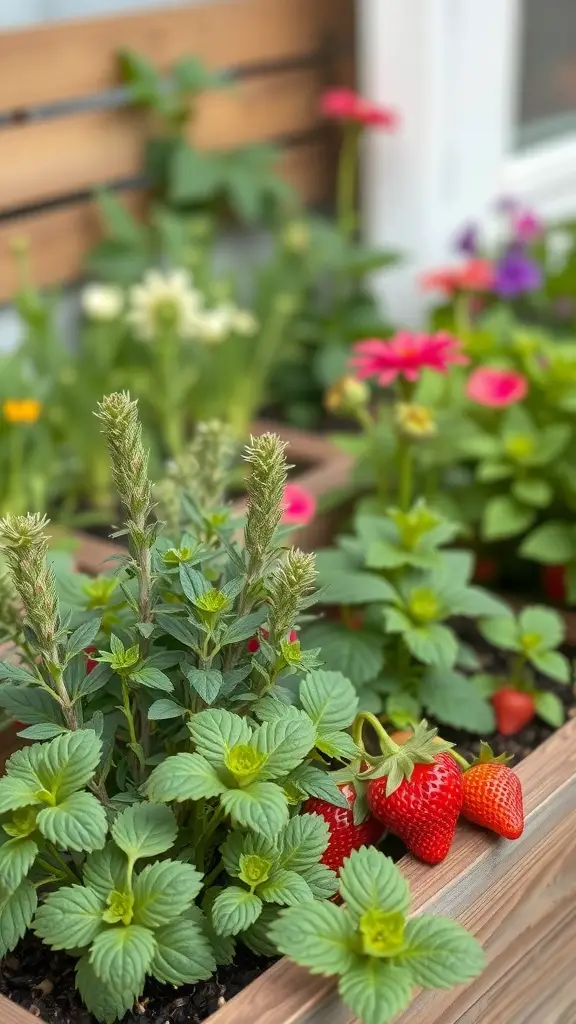
Flower boxes can be more than just a pretty sight. They can also be a source of fresh ingredients for your kitchen. Imagine stepping outside and picking strawberries right from your flower box. It’s a delightful way to combine beauty with practicality.
In the image, you can see a vibrant mix of plants. The strawberries are ripe and ready to eat, while other herbs and flowers add color and texture. This combination not only looks great but also offers a variety of flavors for your meals.
When planning your flower box, think about what edibles you enjoy. Herbs like mint or basil can thrive alongside flowers. They add fragrance and can be used in cooking or drinks. Mixing flowers and edibles creates a lively garden that’s both functional and attractive.
To get started, choose a sunny spot for your flower box. Use quality soil and ensure good drainage. Plant your strawberries and herbs, and watch them grow. Regular watering and a little care will reward you with a beautiful and tasty garden.
Incorporating Foliage for Visual Interest
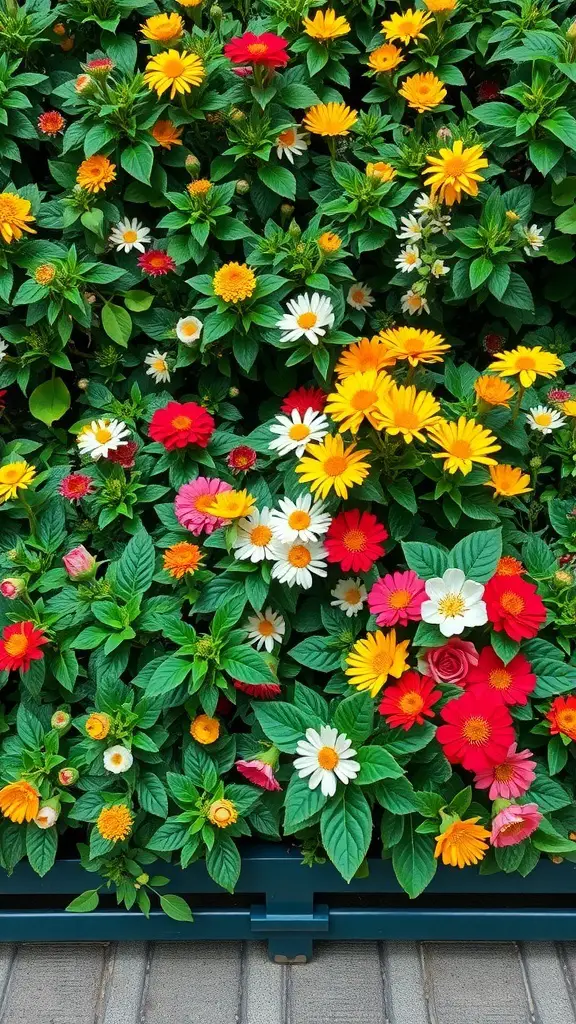
When designing a flower box, adding foliage is a simple way to enhance its beauty. The image shows a vibrant mix of flowers, but the lush green leaves play a key role too. They create a backdrop that makes the colors pop.
Using different types of leaves can add texture and depth. For instance, broad leaves can contrast nicely with delicate flowers. This mix keeps the arrangement interesting and visually appealing.
Don’t forget about the placement! Positioning taller foliage at the back and shorter plants in front creates a layered look. This technique draws the eye and makes the flower box feel fuller.
Incorporating foliage not only adds beauty but also provides a natural frame for the flowers. It’s an easy way to make your flower box stand out and bring a touch of nature to any space.
Layering Techniques for Depth and Texture
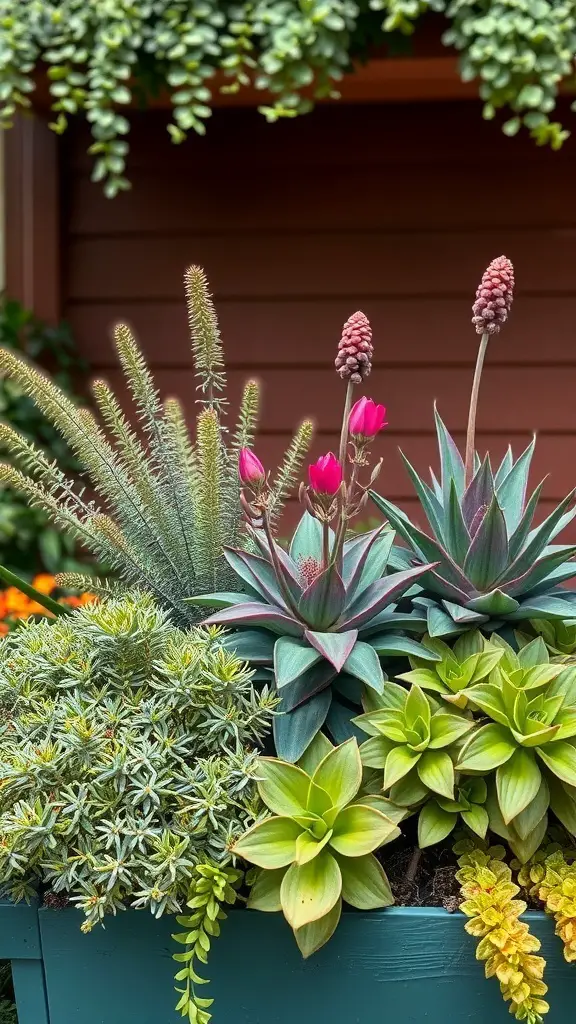
Creating a flower box is a fun way to bring life to any space. Layering plants adds depth and texture, making your arrangement visually appealing. In the image, you can see a beautiful mix of succulents and other greenery, showcasing how different shapes and colors can work together.
The tall, spiky plants at the back create height, while the shorter, rounder succulents in the front add softness. This contrast draws the eye and keeps the arrangement interesting. Mixing various shades of green with pops of pink from the flowers enhances the overall look.
Using plants of different heights is key. Taller plants can serve as a backdrop, while smaller ones fill in the foreground. This layering technique not only looks great but also helps each plant shine in its own way. Don’t forget to consider the textures as well; smooth leaves paired with spiky ones create a dynamic effect.
Lastly, think about the colors. A harmonious palette can tie everything together, while a bold mix can make a statement. Experimenting with different combinations will help you find the perfect balance for your flower box.
Choosing the Right Flowers for Your Box
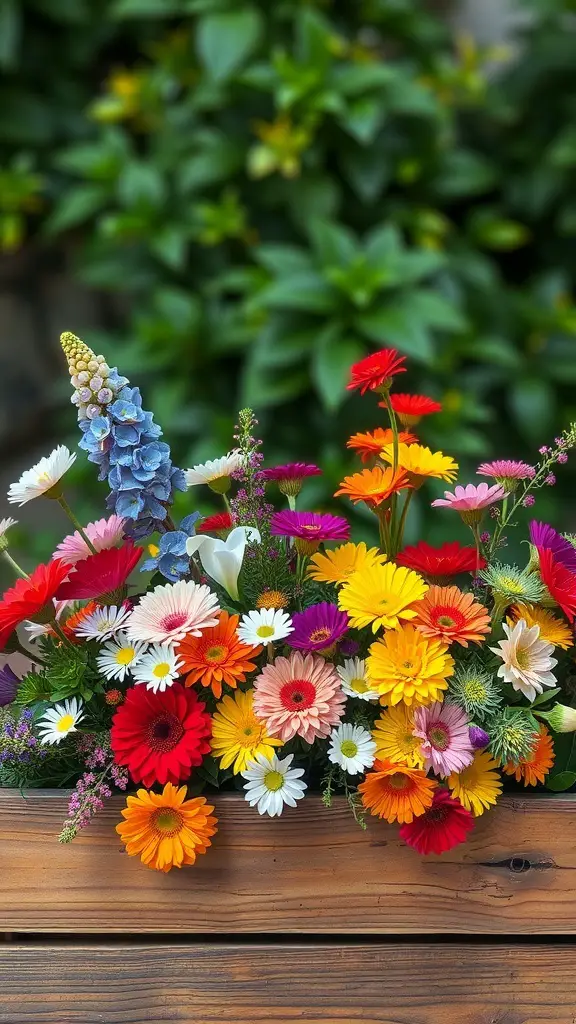
When it comes to filling your flower box, the choice of flowers can make all the difference. The image shows a vibrant mix of blooms, showcasing various colors and shapes. This lively arrangement can inspire you to create your own stunning display.
Start by thinking about the colors you want. Bright reds, yellows, and pinks can create a cheerful look, while softer pastels can bring a more calming vibe. The flowers in the image, like gerberas and daisies, are perfect for adding that pop of color.
Next, consider the types of flowers. Mixing different varieties, like tall delphiniums with shorter daisies, adds depth and interest. The combination seen here creates a beautiful layered effect that draws the eye.
Don’t forget about the seasons! Some flowers thrive in certain months. For instance, sunflowers are great for summer, while chrysanthemums are perfect for fall. Choosing seasonal blooms can also help with availability and cost.
Lastly, think about the care each flower needs. Some may require more sunlight or water than others. The key is to find a balance that works for your flower box. With a little planning, you can create a stunning floral display that brightens up any space.
DIY Flower Box Construction Tips
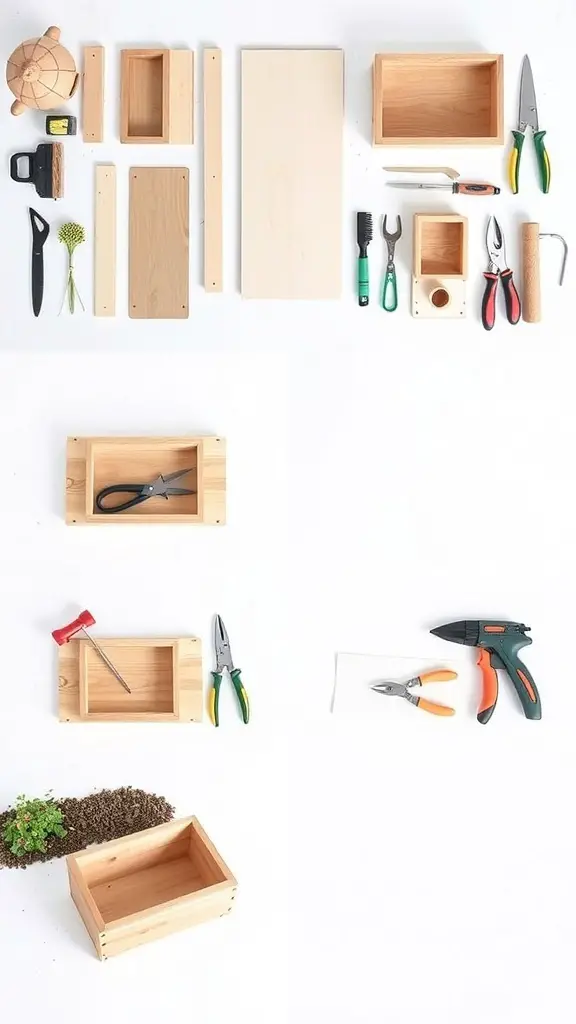
Creating your own flower box can be a fun and rewarding project. The image shows all the materials and tools you’ll need to get started. You’ll see wooden pieces ready to be assembled, along with essential tools like a saw, screwdriver, and pliers.
First, gather your materials. You’ll need wooden planks for the sides and bottom of the box. Make sure to choose wood that can withstand outdoor conditions if you plan to place it outside. The tools shown will help you cut, assemble, and finish your flower box.
Next, measure and cut your wood to the desired size. A standard flower box is usually around 24 inches long, 12 inches wide, and 12 inches deep. Adjust the dimensions based on your space and the types of flowers you want to plant.
Once your pieces are cut, it’s time to assemble. Use screws to secure the sides to the bottom. Make sure everything is aligned properly. A level surface will help ensure your box sits flat.
After assembly, consider adding drainage holes to the bottom. This will prevent water from pooling and help your plants thrive. You can also paint or stain the wood for added protection and style.
Finally, fill your flower box with potting soil and your favorite flowers. Enjoy the process and watch your garden grow!
Seasonal Flower Box Ideas
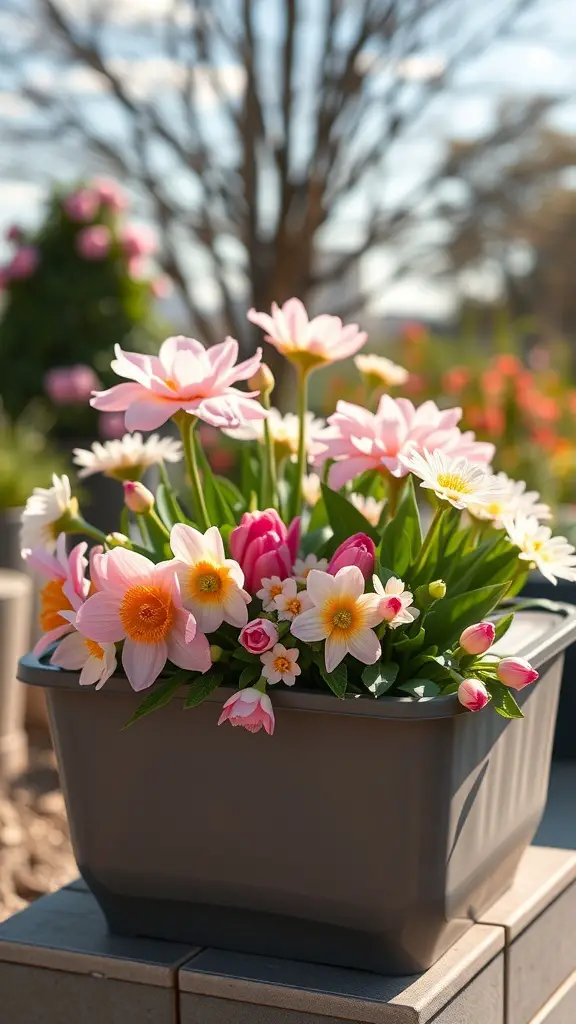
Spring is a fantastic time to brighten up your space with a colorful flower box. The image shows a lovely arrangement filled with cheerful blooms like tulips and daisies. These flowers bring a sense of joy and freshness, perfect for welcoming the season.
When planning your flower box, think about mixing different types of flowers. The combination of pinks, yellows, and whites creates a vibrant look. You can use a sturdy container, like the gray one shown, which adds a modern touch to your garden or patio.
Consider seasonal flowers that thrive in spring. Daffodils and hyacinths are great choices. They not only look beautiful but also fill the air with delightful scents. Adding some greenery can give your arrangement depth and texture.
Don’t forget about maintenance! Regular watering and a little sunlight will keep your flowers looking their best. With a little care, your flower box can be a stunning focal point throughout the season.
Incorporating Decorative Elements
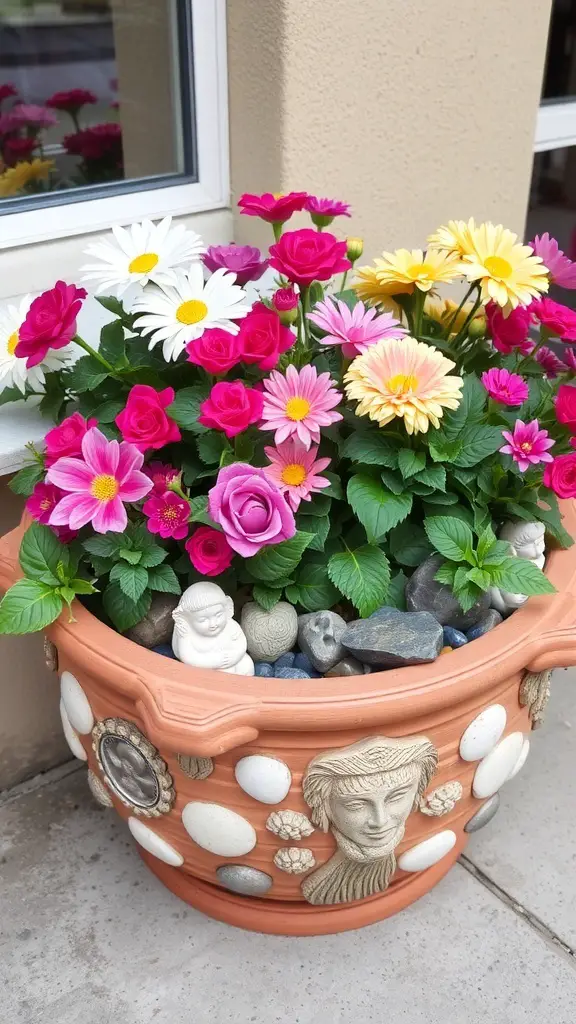
When it comes to flower box design, adding decorative elements can really make your arrangement pop. The image showcases a beautiful flower box filled with vibrant blooms like pink roses, cheerful daisies, and sunny yellow flowers. The colors blend harmoniously, creating a lively display.
The flower box itself is a work of art. Its terracotta base is adorned with unique embellishments, including smooth stones and charming figures. These details not only enhance the visual appeal but also add a personal touch. The thoughtful arrangement of flowers and decorative elements invites viewers to appreciate the beauty of nature.
Consider using similar decorative touches in your own flower boxes. You might add small statues, colorful pebbles, or even shells to create a unique look. These elements can reflect your personality and style, making your flower box a true centerpiece.
Maintaining Your Flower Box Throughout the Seasons
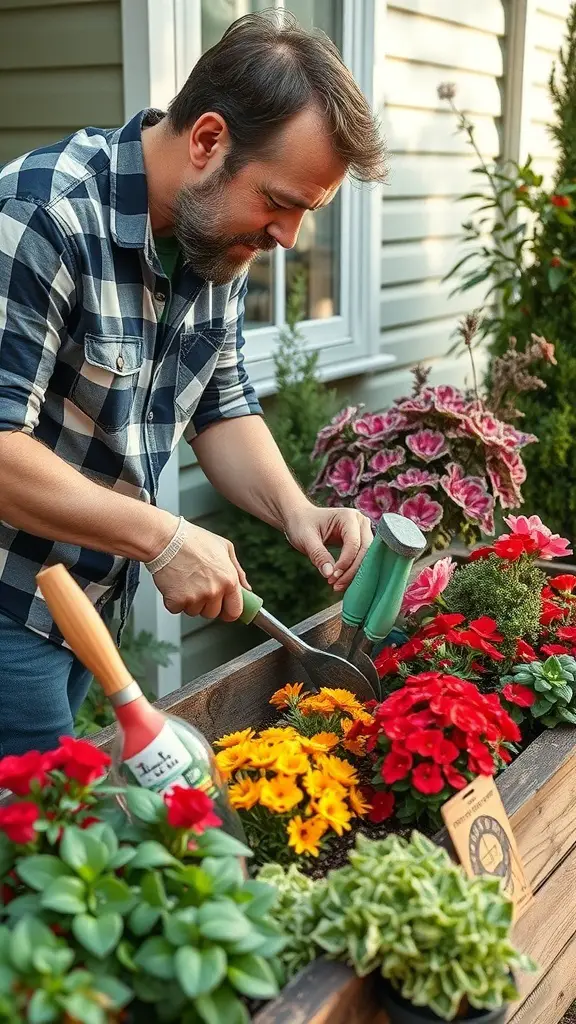
Keeping your flower box looking great all year round is a fun task. In the image, you see someone tending to their flower box, surrounded by vibrant blooms and greenery. This scene captures the joy of gardening and the beauty of a well-maintained flower box.
Start by choosing flowers that thrive in your climate. Some plants do better in cooler weather, while others love the heat. Mixing seasonal flowers can create a stunning display. Regularly check your plants for any signs of pests or disease.
Watering is key! Make sure your flower box has good drainage to prevent overwatering. During hot months, you might need to water more often. In colder months, reduce watering as plants go dormant.
Don’t forget about pruning! Trimming dead or wilted flowers encourages new growth. This keeps your flower box looking fresh and lively. Adding mulch can also help retain moisture and suppress weeds.
Finally, enjoy the process! Gardening is about connecting with nature and finding joy in the little things. Your flower box will not only beautify your space but also bring a sense of peace and satisfaction.
Color Schemes for Harmonious Arrangements
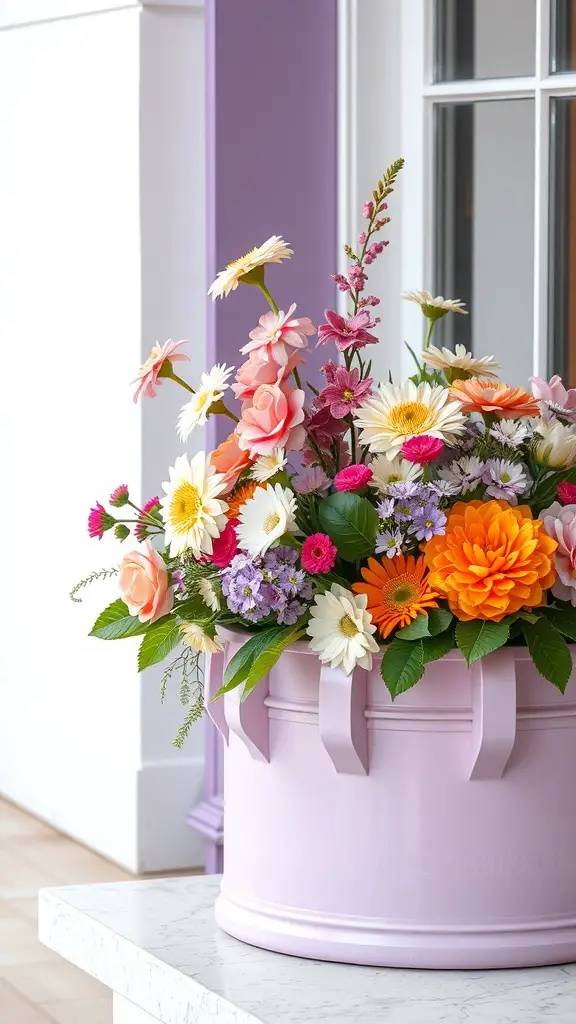
When it comes to flower box design, color plays a huge role in creating a stunning arrangement. The image shows a beautiful flower box filled with a variety of blooms, showcasing a delightful mix of colors. From soft pinks to vibrant oranges and yellows, each flower complements the others, making the arrangement pop.
Choosing the right color scheme can transform a simple flower box into a captivating centerpiece. For instance, using a combination of warm colors like orange, yellow, and pink can create a cheerful vibe. This is evident in the bright daisies and roses in the arrangement, which bring a sense of joy and warmth.
On the flip side, cool colors like blues and purples can evoke calmness and serenity. Imagine a flower box filled with lavender, blue hydrangeas, and white daisies. It would create a peaceful atmosphere, perfect for a relaxing space.
Don’t forget about contrasting colors! Pairing complementary colors, like orange and blue, can make each hue stand out even more. The flower box in the image does a great job of balancing various shades, ensuring that no single color overpowers the others.
Ultimately, the key to a harmonious arrangement lies in understanding how colors interact. Whether you prefer a bold and bright look or a soft and subtle palette, experimenting with different combinations can lead to stunning results. So grab your flowers and start creating!
Flower Box Placement for Maximum Impact
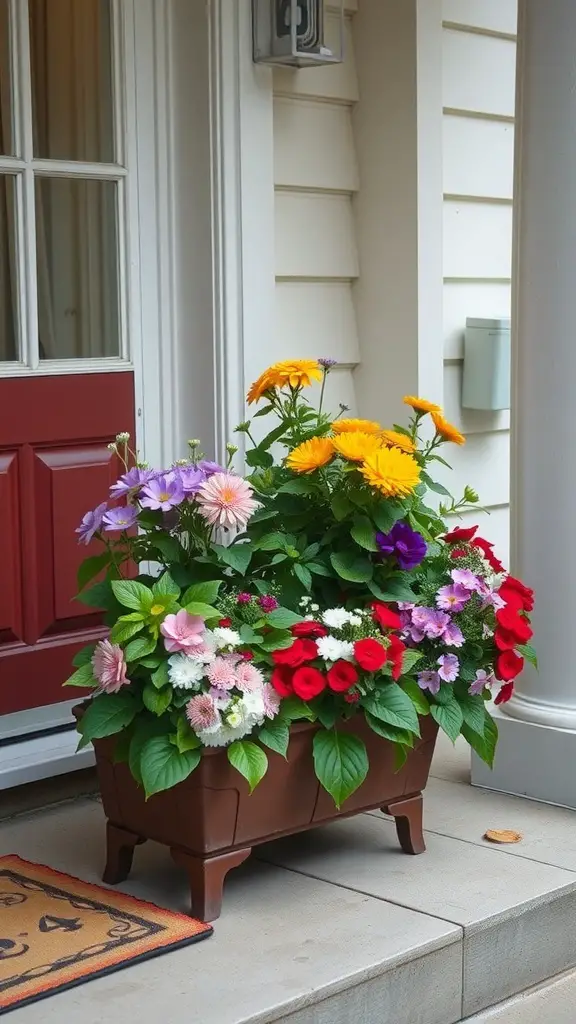
Choosing the right spot for your flower box can really enhance your home’s entrance. The image shows a vibrant flower box filled with colorful blooms, sitting right by a welcoming front door. This placement draws the eye and creates a cheerful first impression.
When thinking about where to place your flower box, consider visibility. A spot near the entrance, like in the image, makes it easy for guests to appreciate the beauty as they arrive. You can also think about the sunlight. Most flowers thrive in bright light, so a sunny location will help them flourish.
Another factor is the height of the flower box. Elevated boxes, like the one shown, can add depth to your porch. They stand out without taking up too much space. This design choice allows for a mix of taller and shorter plants, creating a layered look that’s visually appealing.
Lastly, don’t forget about seasonal changes. You can swap out flowers to match the seasons, keeping your entrance fresh and inviting. This way, your flower box becomes a dynamic part of your home’s decor, always ready to impress.
Combining Annuals and Perennials for Longevity
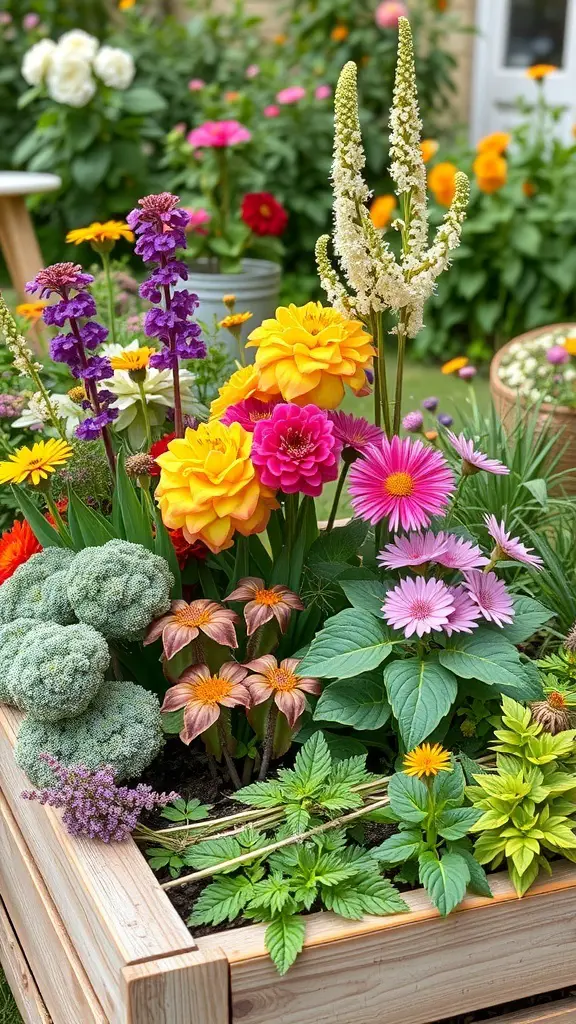
Creating a flower box that features both annuals and perennials can be a delightful way to enjoy blooms throughout the seasons. In the image, we see a vibrant mix of flowers, showcasing the beauty of this combination.
Annuals, like the bright zinnias and cheerful marigolds, offer immediate color and can bloom all summer long. They’re perfect for adding that pop of color right away. On the other hand, perennials, such as the lovely daisies and elegant white flowers, come back year after year, providing a reliable source of beauty.
Mixing these two types of plants not only enhances visual appeal but also ensures that your flower box remains lively and full of life. The annuals will fill in the gaps while the perennials establish themselves, creating a lush and dynamic display.
Don’t forget to consider the foliage as well! The green leaves of herbs and other plants in the box add texture and depth. This thoughtful layering creates a stunning visual effect that can be enjoyed from spring through fall.
Creating a Succulent Flower Box
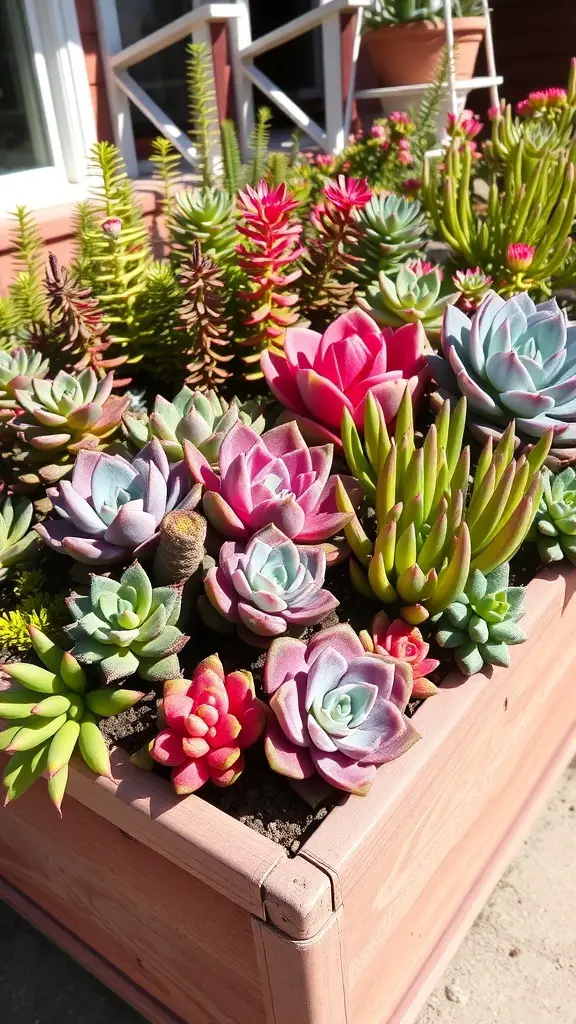
Creating a succulent flower box is a fun and rewarding project. The image shows a beautiful arrangement of various succulents in a wooden box. These plants are known for their unique shapes and vibrant colors, making them a great choice for any garden or patio.
To start, choose a sturdy box that can hold soil and drainage. A wooden box, like the one in the image, adds a rustic touch. Fill it with a well-draining soil mix, which is essential for succulents. You want to avoid waterlogging, as this can harm the plants.
Next, select a variety of succulents. The image features a mix of colors and sizes, which creates visual interest. When planting, arrange them in a way that allows each plant to shine. Taller plants can go in the back, while shorter ones can be placed in front.
Once planted, give them a good watering, but don’t overdo it. Succulents thrive in bright light, so place your flower box in a sunny spot. With a little care, your succulent flower box will flourish and bring joy to your space.

